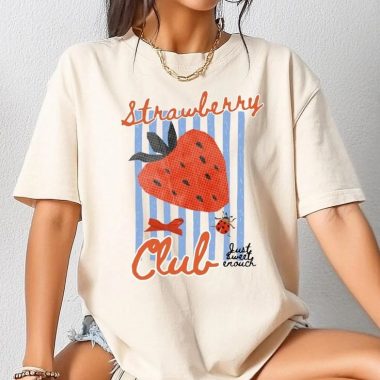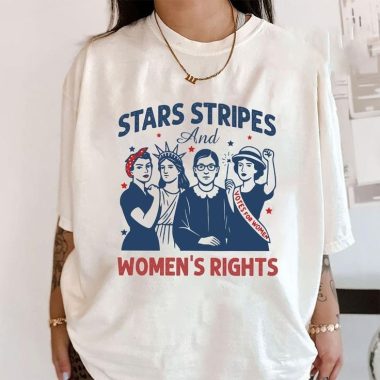Fashion is not merely the shifting of trends, the glint of runways, or the flair of design. It is a multidimensional phenomenon that reaches into the essence of human civilization, connecting centuries of tradition with the immediacy of the now. It bridges continents and cultures, generations and genres, body and soul. In its most profound form, fashion becomes a living manuscript of who we are, what we believe, and how we choose to be remembered. Through folds of fabric and waves of innovation, fashion serves as both a reflection and a prophecy—telling us where we have been and whispering where we might go. Its power is not contained in seasonal collections or consumer cycles but in its ability to continually redefine the relationship between the individual and the world. The journey of fashion is the journey of consciousness, wrapped in thread and stitched with intention.
In the earliest epochs of humanity, when survival dictated existence and nature was both ally and adversary, clothing emerged not as luxury but necessity. Yet even in these primal conditions, people chose to express meaning through what they wore. Animal hides were more than mere protection; they symbolized conquest and spiritual connection. Feathers, shells, and natural pigments became adornments with coded significance—markers of courage, fertility, wisdom, or ancestry. These first garments were created not just for warmth but for ritual. They were sacred extensions of the self and the cosmos. The first fashion was storytelling—woven through bone, skin, and ash.
As humanity settled, and civilizations flourished along rivers and deserts, mountains and coasts, fashion grew into a symbolic system as powerful as language or architecture. In Mesopotamia, the earliest known textile-producing society, clothing denoted class, gender, and ceremonial status. In ancient Egypt, the sheer whiteness of linen signified divine purity. The pharaoh’s gold-plated sandals were not mere ornament—they embodied celestial authority. In the Indus Valley, motifs stitched into cotton robes signaled community identity and seasonal cycles. In ancient China, embroidery patterns carried Confucian ideals, and rank was visually encoded through color. The imperial yellow, restricted to emperors, symbolized a direct connection to heaven. Fashion was a visible hierarchy, but it was also a language of grace, philosophy, and cosmic balance.
In classical Greece, clothing mirrored the emerging ideals of proportion, rationality, and democracy. The flowing tunics and togas emphasized drapery over structure, allowing movement and breath. Dress became an extension of intellect, art, and citizenship. In Rome, fashion evolved into political theatre. Senators wore purple-trimmed togas to assert dominance, while hairstyles, jewelry, and footwear reflected conquest and colonization. Roman fashion absorbed the aesthetics of the regions it ruled, a visual testament to empire and assimilation. Meanwhile, in pre-Columbian America, Incan textiles and Aztec costumes told complex mythologies of gods and nature. The entire world was already dressed in meaning long before modern fashion was born.
The Middle Ages brought fashion into the realm of theology and feudal order. In Europe, sumptuary laws regulated who could wear what, preserving class divisions and reinforcing religious morals. Bishops wore robes that mirrored liturgical calendars; peasants donned earth-toned tunics, tied with rope. Armor was fashioned not only for protection but for legacy—engraved with crests, prayers, and family symbols. In Japan, the layering of kimono spoke volumes. A person’s rank, profession, and mood could be read in the silk folds they wore. In Africa, the Kongo, Yoruba, and Ashanti peoples crafted vibrant textiles infused with history, community, and cosmology. Fashion was never isolated; it was always interconnected with identity, ecology, economy, and spirit.
The Renaissance ignited fashion with a renewed obsession with beauty, anatomy, and status. Italian courts were ateliers of extravagance, where velvet, lace, and gold thread merged with mathematical proportion and artistic flourish. Portraits from this era are not just depictions of people—they are fashion archives, illustrating how clothing became a tool of self-mythology. Ruffs, codpieces, corsets, and gowns ballooned not only in size but in significance. To dress was to perform intellect, wealth, sophistication, and lineage. Fashion became a battleground of innovation and imitation, with tailors, dyers, and artisans gaining prestige in a world that was discovering human potential anew.
The Enlightenment shifted fashion once more—from ornamentation to ideology. Clothing began to express modern values: rationalism, democracy, and personal liberty. Revolutionary France saw fashion as resistance. The aristocracy’s powdered wigs and embroidered coats became emblems of tyranny. The revolutionaries chose simplicity, aligning their garments with Enlightenment ideals. This shift was not only symbolic but radical—it redefined how fashion could participate in political change. The newly formed American republic echoed this with modest suits and plain cotton garments. Fashion here became a visual articulation of independence and equality.
The 19th century birthed the dual identity of fashion as both art and industry. The rise of the sewing machine, synthetic dyes, and textile factories revolutionized clothing production. Fashion houses like Worth and Poiret turned designers into celebrities. Department stores and illustrated fashion magazines brought the latest trends into the hands of middle-class consumers. Yet this expansion came with costs: exploitative labor, colonial sourcing of materials, and the mechanization of beauty standards. Still, fashion remained deeply intimate. Mourning clothes, wedding dresses, military uniforms—all carried emotional gravitas. Women’s fashion, in particular, reflected the paradoxes of the era: the romanticization of domesticity versus the growing desire for freedom.
The 20th century fractured fashion into experimentation, rebellion, and mass consumption. World Wars necessitated practicality, leading to the birth of utility fashion and innovations in materials like nylon. Post-war prosperity fueled the re-emergence of glamour, with designers like Dior reinstating femininity through the New Look. The 1960s tore those silhouettes apart with miniskirts and mod culture. Youth rebellion claimed fashion as a language of disruption. Hippies, punks, and new romantics created entire worlds with their wardrobes. Street fashion collided with haute couture. Designers like Vivienne Westwood, Rei Kawakubo, and Jean-Paul Gaultier defied rules and questioned gender, beauty, and art.
The late 20th and early 21st centuries saw fashion mutate into an omnipresent global force. Fast fashion giants emerged, compressing design cycles into weeks. Social media turned anyone into a style icon. Influencers displaced fashion editors. Trends became hyper-accelerated and transnational. Simultaneously, fashion began confronting its darker truths—waste, overproduction, cultural appropriation, labor exploitation, and mental health pressures. Movements arose to advocate for slow fashion, ethical sourcing, and inclusion. The rise of digital fashion and virtual garments challenged the need for physical production at all. Augmented reality, 3D printing, and blockchain authentication are reshaping how we wear, sell, and experience clothing.
Today, fashion is not only worn—it is curated, archived, and encoded with values. It is activism stitched into seams. It is pride woven into patterns. It is protest spelled in slogans. It is identity layered over trauma, resilience, heritage, and hope. Fashion is used to reclaim narratives by Indigenous communities, to celebrate gender fluidity, to confront colonial histories, and to imagine post-capitalist futures. It is no longer limited to cities or seasons—it is global and personal, constant and ever-changing.
Fashion now exists in multiple realities. The same person may wear sustainable hemp, vintage denim, custom couture, and digital skins for their avatar in a single day. Our wardrobes have become cross-cultural, multi-temporal, and multi-dimensional. We are no longer just wearers—we are curators, storytellers, and co-creators. Fashion is no longer simply seen. It is shared, saved, and reinvented.
As we move deeper into an era defined by climate urgency, artificial intelligence, and redefined identity, fashion must navigate its role with care and clarity. The choices we make—what we wear, what we discard, what we reuse—are deeply political. Clothing must return to its roots: not as mere commodity but as community. The future lies in regenerative practices, ancestral wisdom, inclusive design, and technological harmony. The most revolutionary garment may not be the most expensive, but the most ethical. The most radical fashion may not be the newest, but the most meaningful.
Ultimately, fashion is a lifelong companion. It grows with us, evolves with us, dreams with us. It listens when words fail and speaks when silence reigns. It is both armor and offering, map and mirror. Fashion is not just what we put on in the morning. It is how we express love, courage, sorrow, identity, belief, belonging, and transformation. It is not merely fabric. It is philosophy in motion. It is, and always has been, the infinite fabric of human experience.



